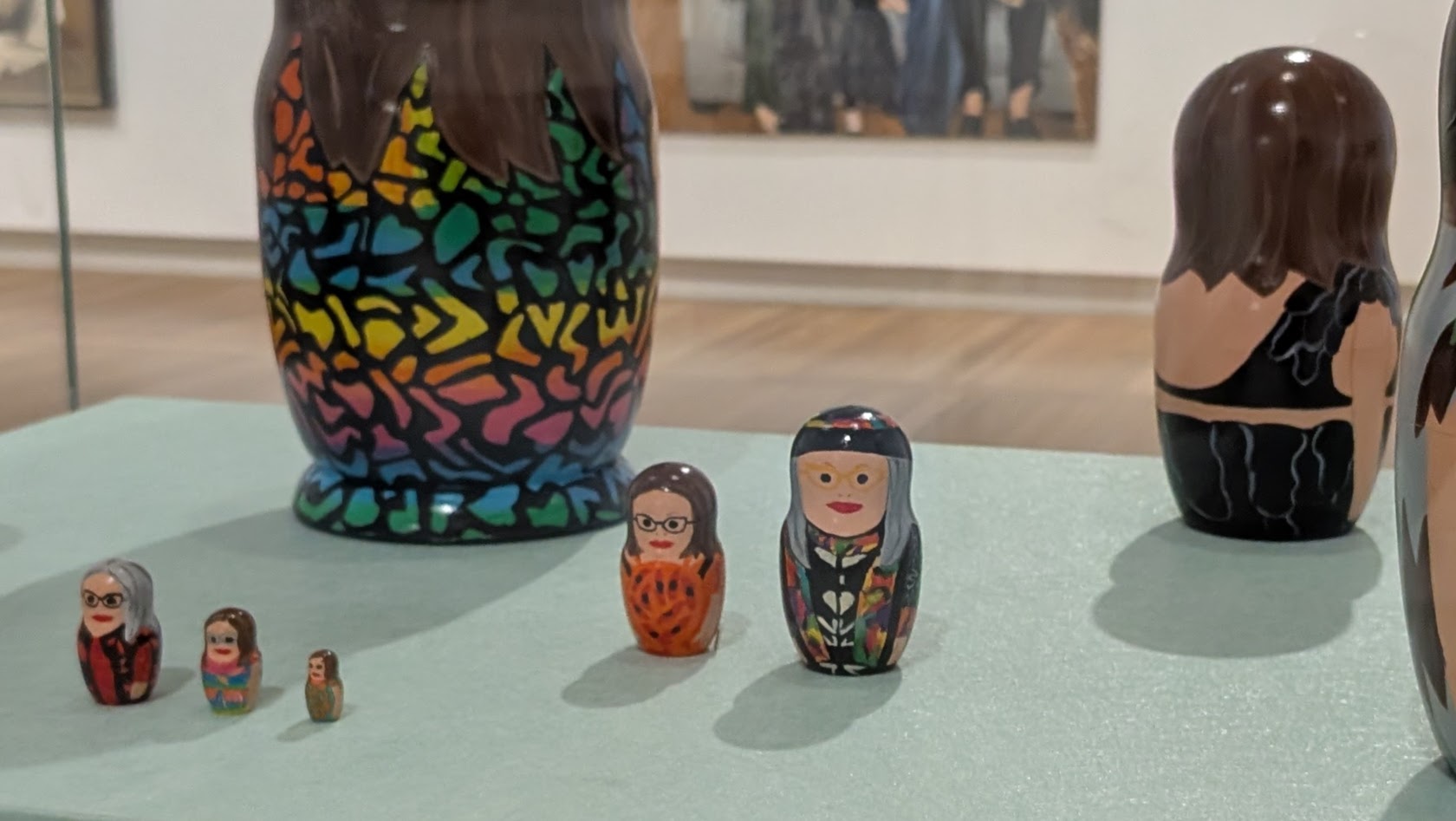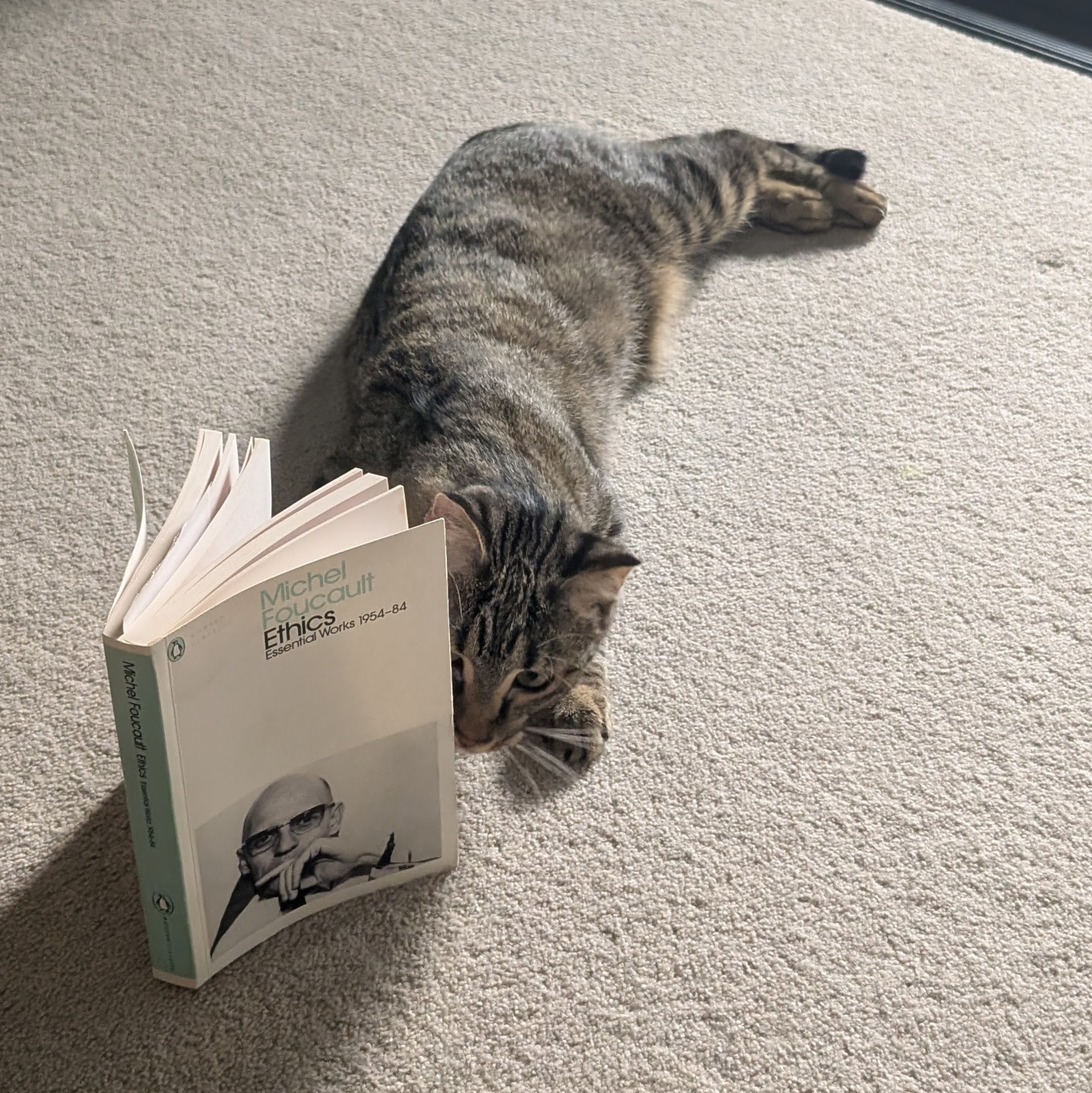Table of Contents
Nature as the recursion of culture
Nature as the recursion of culture
Ryan Schram
ANTH 2700: Key debates in anthropology
ryan.schram@sydney.edu.au
Social Sciences Building 410 (A02)
Week of May 05, 2025 (Week 10)
Slides available at https://anthro.rschram.org/2700/2025/10
Main reading: Lien and Law (2011)
Other reading: Strathern (1996); Carsten (2014); Latour (2005); Latour (2004)
Jackalopes, take two: Jackalopes in the zoo of the universe
“A jackalope is an animal with the head of a rabbit and the body … of a rabbit, but not the same rabbit.” Get it? LOL!
- The first time I mentioned this idea we learned that it needed some work.
- Set aside that version of this thought experiment. Focus on the type–token distinction, which is what the original joke plays on
- A type is an abstract category of things. Chair in the statement “A chair is a great place to sit” is a type.
- A token is a member of a type, or a specific instance. Chair in the statement “This is my favorite chair” is a reference to a token.
When we talk or think about anything, we are always working with nested boxes
- We think of a chair; we assume it goes in the chair type, a box for all the chairs in the world.
- Chair (type) is an example of a larger category, sitting places, another box.
Our mail sorting machines have mail sorting machine sorting machines.

Figure 1. Matryoshka dolls are hollow, so that smaller dolls nest within larger dolls (Doig 2023).
We are always operating with a specific ontology (a systematic picture of what exists.)
To understand ontology, let’s play a game with Wikipedia
Choose a random Wikipedia article
It literally does not matter which one. Here’s some possibilities:
Follow the first link. Repeat.
- Click the first hyperlink in the first sentence of the main text of the article (i.e. not one in parentheses, in a sidebar, or callout box).
- Go to the linked article.
- Repeat.
- If you loop back to where you started, follow the second link in the main text and repeat the procedure.
Where do you end up? What is the last article you land on before you are caught in a small loop?
What if this class had a Wikipedia?
Imagine a Wikipedia for ANTH 2700.
It would have articles for:
- Agenehambo village (an Orokaiva community)
- San people of the Kalahari
- Fasu people of the Lake Kutubu region
- Bafokeng Kingdom
- 18–19th century potlatching societies of the Pacific Northwest of North America
- the Kingdom of Hawaiʻi, 1779–1893
- Signature Fashions
- 2010s London
- The Haudenosaunee in the 19th century
- The Lumbee and other people in Robeson County, North Carolina
- Indian welfare offices, and
- Norwegian salmon farms
Would Wikipedia-style linking correctly organize these ethnographic cases?
What if pets had a Wikipedia?
Think about all the animals people keep as pets—from ferrets to goldfish and everything in between.
Where do they go on the Wikipedia of Pets?
Now use Mentimeter to take a stand on these controversial statements, some about pets:
- Go to https://menti.com and use code
1443 1102. - Or follow this link: https://www.menti.com/alptqxyvzm3b
Cats and big cats
What’s really the difference between a domestic cat, such as Timo, and a lion, a mountain lion, or a lynx?

Figure 2: Timo is a nine-month old cat. Having adjusted to his new home after being rescued from a shelter, he is now learning to tolerate visiting cat-sitters. He enjoys clawing at and rubbing his whiskers against page edges of books, in this case Rabinow (2000).
Everything is broccoli
Figure 3. Cultivars of Brassica oleracea. This diagram illustrates the diverse range of vegetables that have been developed from the wild mustard plant. Created by author.1)
Lien and Law are motivated by two very big questions:
- What do we mean by species? What’s the real difference between one species and another species?
- What is domestication? What do we mean to say that human domestication of certain wild species over history has led to new domesticated species?
Back to jackalopes
Differences in animal species feel mighty real
- Dogs and cats are different types of things.
- Dogs and wolves are… yeah, different kinds of things.
Differences in social formations are harder to typify, even though human social formations are real things that exist
- Urban and rural societies are … Well, if you took first-year anthro classes, you darn tooting better not say that one is a “modern society!”
We should be just as skeptical about domesticated plants and animals as we are about types of society
Are cats and dogs actually, objectively different types? You have two choices:
- Yes, they clearly are different. I can define dog in the abstract. I can define cat in the abstract. My definitions apply to all real dogs and real cats, like Timo. All cats have the same essence: catness. Everything has an is-ness: I am an essentialist.
- No, they aren’t different. These are just names. Dog, cat, urban, modern, rural are just labels someone slaps on individual things. No ideal types exist: I am a nominalist.
Anthropology’s dilemma: Essentialism or nominalism?
For a long time, anthropology wanted to run away from its roots in an essentialist mindset.
This was what Trouillot ([2003] 2016) warned us about
- Don’t call all the people in one community “The Nuer,” “The Azande,” etc. (even if that’s their endonym for themselves). It’s treating them as a monolithic, uniform block. They are a diverse group of individuals.
- Don’t lump some societies together under one label—Indigenous, small-scale, agrarian, pastoralist—and split them off from other lumps—horticulturalist, urban, complex, settler-colonial. We’re all on a spectrum.
The post-1970s love of nominalism in anthropology smuggles in a hidden essentialism
- Everyone is an individual, and each individual is essentially like other individuals: agency, rationality, strategic thinking, choice, creativity.2)
Is there a third way? Everyone in anthropology is searching for one.
- What if there were no things? No types. No tokens. What if there was only—hear me out—the now. 🤯
- What if we based our explanations of our world on a theory of the event without assuming that there are people, places, groups, or types of society?
Mentimeter time! Interact with classroom learning!
Which of these statements are performative, that is they do what they say, or simply do something by being said?
Go to https://menti.com and use code 7263 1354 or go to https://www.menti.com/al9dza3yyws4.
What is a domesticated salmon? Do they make good pets?
Domesticating salmon is the performativity of knowledge
- Knowledge is communicated; knowledge has a performative, or illocutionary, aspect.
Domesticating salmon is like building a house of cards
You are constantly tinkering, adjusting, tweaking… And it still eventually falls down.
- Disease prevention
- Alien species
References and further reading
Carsten, Janet. 2014. “An Interview with Marilyn Strathern: Kinship and Career.” Theory, Culture & Society 31 (2-3): 263–81. https://doi.org/10.1177/0263276413510052.
Doig, Adrienne. 2023. Aussie Icon: Portrait of Linda Jackson. Synthetic polymer paint on wood. 2023.26.a-j. National Portrait Gallery of Australia. https://www.portrait.gov.au/portraits/2023.26.a-j/aussie-icon-portrait-of-linda-jackson.
Irvine, Judith T. 1996. “Shadow Conversations: The Indeterminacy of Participant Roles.” In Natural Histories of Discourse, edited by Michael Silverstein and Greg Urban, 131–59. Chicago: University of Chicago Press Chicago. https://archive.org/details/naturalhistories0000unse_w1b3/page/130/mode/2up.
Latour, Bruno. 2004. “Why Has Critique Run Out of Steam?: From Matters of Fact to Matters of Concern.” Critical Inquiry 30 (Winter): 225–48.
———. 2005. “On the Difficulty of Being an ANT: An Interlude in the Form of a Dialog.” In Reassembling the Social: An Introduction to Actor-Network Theory, 141–56. Oxford: Oxford University Press.
Lien, Marianne Elisabeth, and John Law. 2011. “‘Emergent Aliens’: On Salmon, Nature, and Their Enactment.” Ethnos 76 (1): 65–87. https://doi.org/10.1080/00141844.2010.549946.
Luhrmann, Tanya M. 2004. “Metakinesis: How God Becomes Intimate in Contemporary U.S. Christianity.” American Anthropologist 106 (3): 518–28. https://doi.org/10.1525/aa.2004.106.3.518.
Rabinow, Paul, ed. 2000. Michel Foucault: Ethics—Essential Works, 1954-84. Translated by Robert Hurley. Vol. 1. London: Penguin Books.
Robbins, Joel. 2013. “Beyond the Suffering Subject: Toward an Anthropology of the Good.” Journal of the Royal Anthropological Institute 19 (3): 447–62. https://doi.org/10.1111/1467-9655.12044.
Strathern, Marilyn. 1996. “Cutting the Network.” The Journal of the Royal Anthropological Institute 2 (3): 517–35. https://doi.org/10.2307/3034901.
Trouillot, Michel-Rolph. (2003) 2016. “Anthropology and the Savage Slot: The Poetics and Politics of Otherness.” In Global Transformations: Anthropology and the Modern World, 7–28. New York: Palgrave Macmillan. https://link.springer.com/book/10.1007/978-1-137-04144-9.
